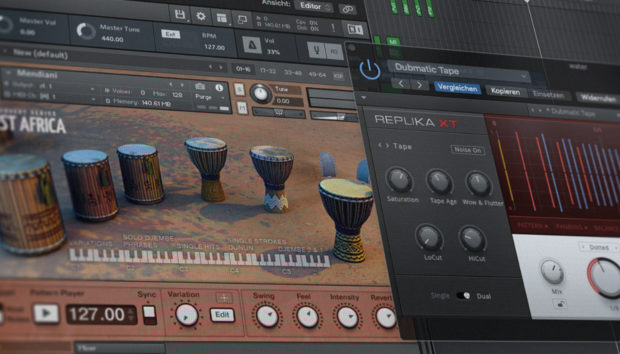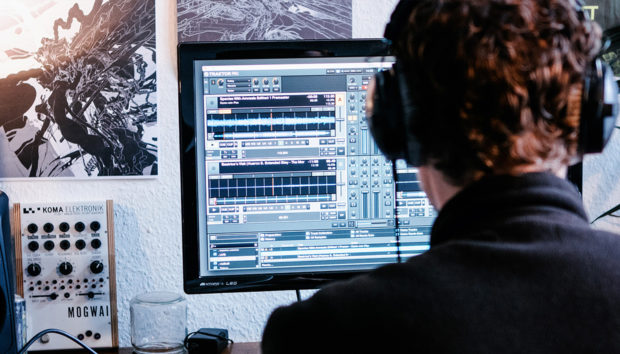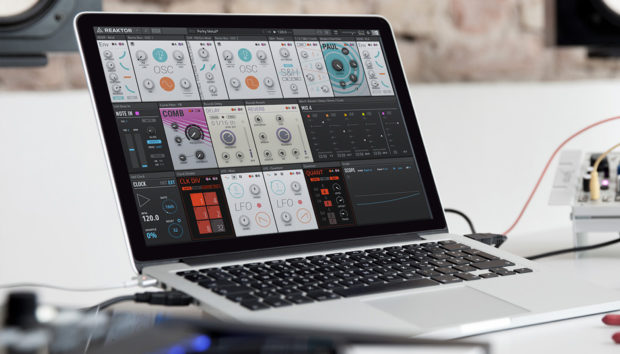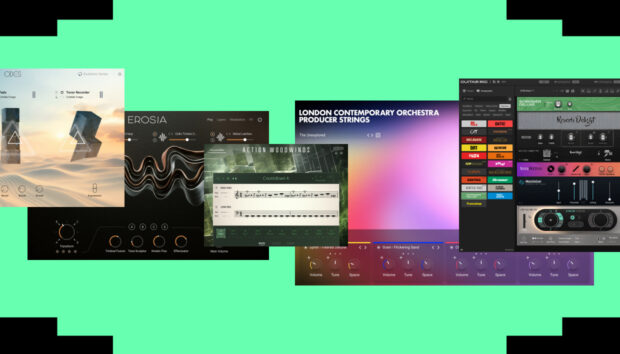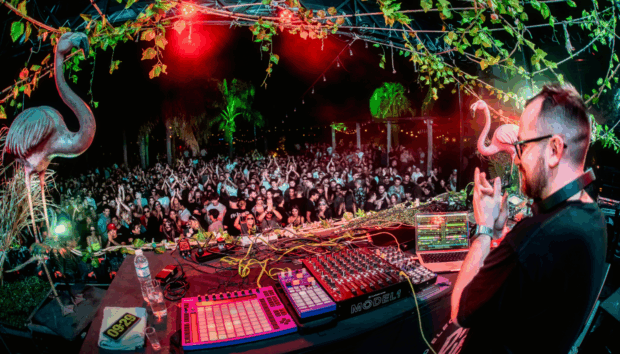Boreta’s new single “Back to Life,” created with the ethically-trained AI vocal model Ai.mogen, isn’t trying to hide its foundations in any way. But at the same time, it’s not synthetic for the sake of novelty and instead leans heavily into transparency, intentionality, and is built around emotion.
The track was released in May 2025 as the final single from his solo album, Hear the Listener, which landed in early June of the same year. As a founding member of The Glitch Mob and one-half of the ambient duo Superposition, Boreta has spent the better part of two decades using Native Instruments tools to shape unpredictable, human-feeling music out of software.
We caught up with him to talk about modularity, artistic control, and how Guitar Rig and Reaktor help build systems where creativity and surprise can coexist.
Jump to these sections:
- Why modularity makes AI vocals feel human
- How he blends randomness with control
- Reaktor bridging the gap between AI and use and creative mystery
- His go-to tools for texture and chaos
- The ethics of working with vocal models
- Advice for new Reaktor users
From Glitch Mob classics to his new solo work, Boreta’s process has always leaned on intentional experimentation. This time, he walks us through what that means in an AI-driven creative environment.
When you’re working with an AI-generated vocal like Ai.mogen, what role does modularity play in shaping something emotionally believable?

This was an interesting hybrid. It started as a sample, and then I used Imogen’s model to re-sing parts of it. I’m not particularly drawn to fully AI-generated vocals. What made this one work is that it added a new layer on top of something already deeply human.
I used Guitar Rig a lot for shaping the vocal. I’ve built out tons of racks that I cycle through and re-patch constantly. Modularity is crucial here because it gives me the speed and flexibility to try things I wouldn’t normally think of. I also keep a huge stash of old Reaktor patches I bring in to add texture, weirdness, and surprise in the sound design phase. It’s a controlled chaos that helps something artificial feel more alive.
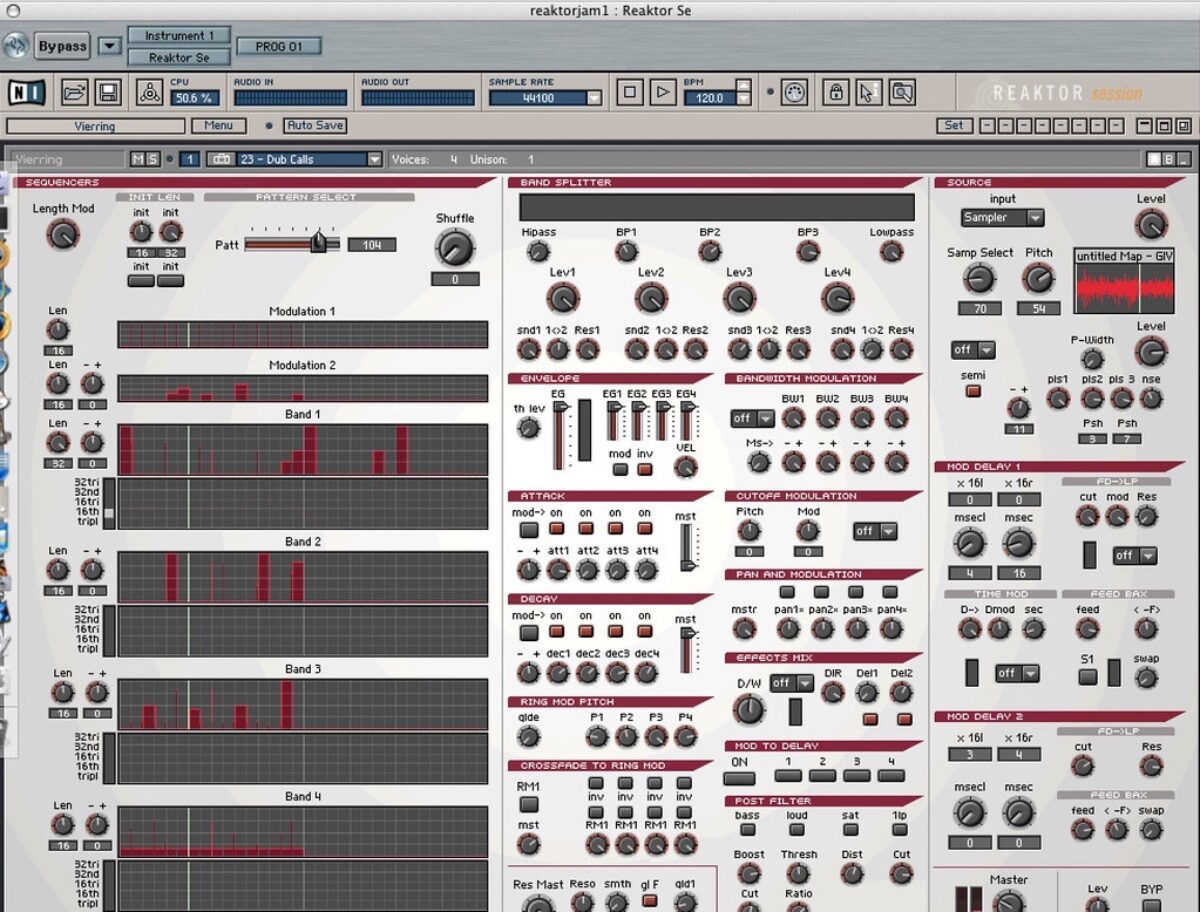
Both Reaktor and Guitar Rig are my desert island tools.
Pro Tip: Use Guitar Rig distortion as a subtle layer on basses, vocals, and pads for extra grit. People sleep on Guitar Rig, but it’s one of the most transformative effects I have.
What does control mean to you in a creative process that includes both randomness and intention?

Randomness and happy accidents are everything to me. Most of my process is about stumbling through the dark until I hear something that catches me, and then I chase that. I don’t build my own Reaktor ensembles anymore like I used to, but what I do now is build complex Ableton racks that function almost like modular systems.
I layer Reaktor instruments, Guitar Rig, and other effects into a single note-triggered setup that spits out unpredictable results. The computers are fast enough now that I can go fully overkill with sound design.
Another thing I rely on is layering instruments together in unconventional ways. Control, for me, is about designing a system where surprise is built in, but I still get to choose what to keep.
Pro Tip: Philthy is another user library favorite.
Did you feel any tension between transparency in AI use and the creative mystery you try to maintain as a producer? How does Reaktor’s flexibility help you bridge that gap?

The word “AI” is being used to describe so many different things right now that it’s basically lost all meaning. People see “AI music” in a headline and assume it’s always built on stolen data, which sometimes it is. That creates confusion and mistrust. But a lot of these tools don’t operate that way at all.
Imogen’s vocal model, for example, is more like a vocoder or style transfer than true generative AI. It’s trained entirely on her voice, and she approved and participated in the process. It’s not scraping anyone else’s catalog. For me, this kind of ethical use of AI is the only way forward. Reaktor helps here because it has always been about artist-built tools, community patches, and open-ended systems. I see it as a space for imaginative agency, not optimization.

And beyond that, I think it’s essential that artists stay involved with these tools. Otherwise, the only people building with AI will be tech companies trying to save time or cut costs. We need to imagine more interesting futures than that.
Pro Tip: Replika is my go-to delay. I keep it on a send on most sessions. Clean and flexible.
Coming from Glitch Mob and Superposition, did you need to unlearn any habits in Reaktor to give this track room to grow in its own direction?

I’m always evolving, but I definitely have a set of Reaktor ensembles I come back to again and again. Reaktor is deep enough that even with the same tools, I can always find new angles. So while I didn’t have to unlearn anything, I had to consciously stay open.
Some of my earliest work, Slidecamp, was built around a few core patches from the Krypt and the Vierring. I still use some of those today for texture and atmosphere. Some people collect vintage outboard synths. I collect weird old software. Reaktor’s longevity comes from how personal it can become. It’s not about chasing trends. It’s about building a private language.
Pro Tip: I love stacking old weird instruments like Krypt or Vierring, jamming them on a track, then chopping up the bits for glitchy percussion sprinkles.
Do you approach mixing AI vocals the same way you’d approach a human voice?
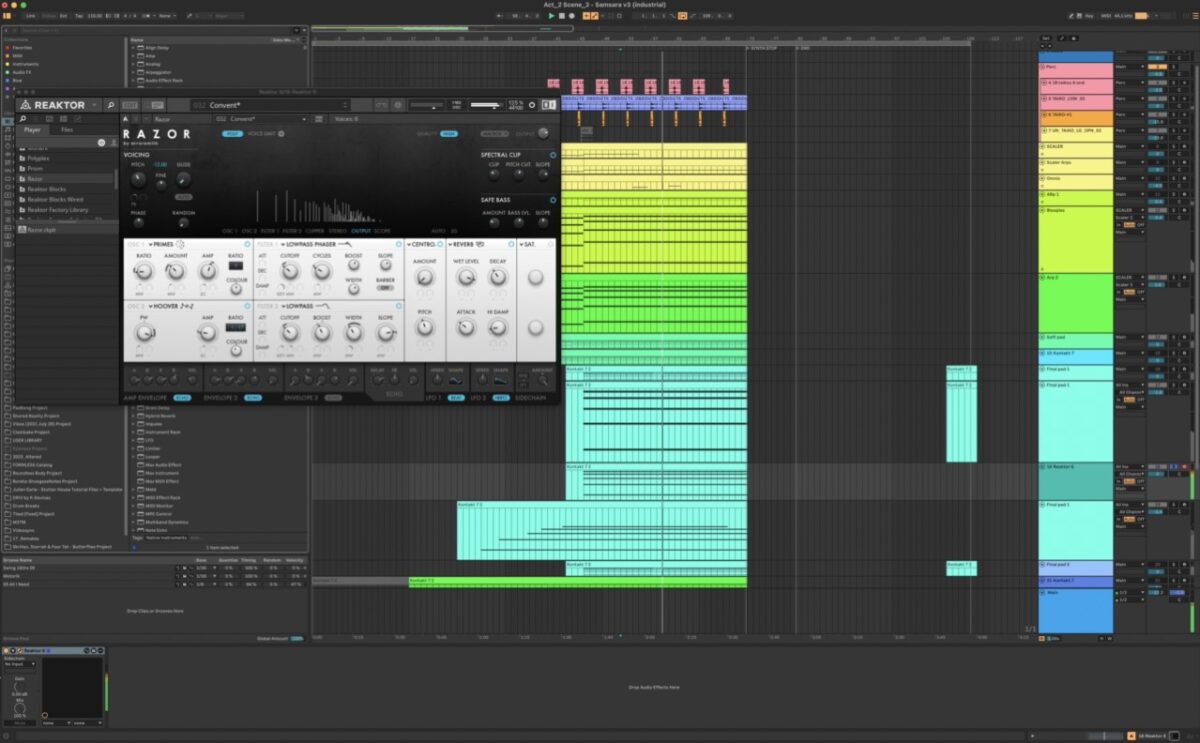
I treat AI vocals like samples. It’s closer to pulling a strange snippet off a record than working with a live performance. So I don’t mix them like a singer. I treat them like a found sound with all its weird artifacts intact. That mindset applied to the whole record. Almost nothing was done in a traditional pop mix way. Everything was layered, chopped, reprocessed, and shaped to fit the sonic world I wanted, not to sound natural, but to sound right.
Pro Tip: Razor is my favorite vocoder. Use it on vocals or drums for super weird effects.
Final question: what would you tell another producer who’s on the fence about learning Reaktor or getting into modular tools at all?
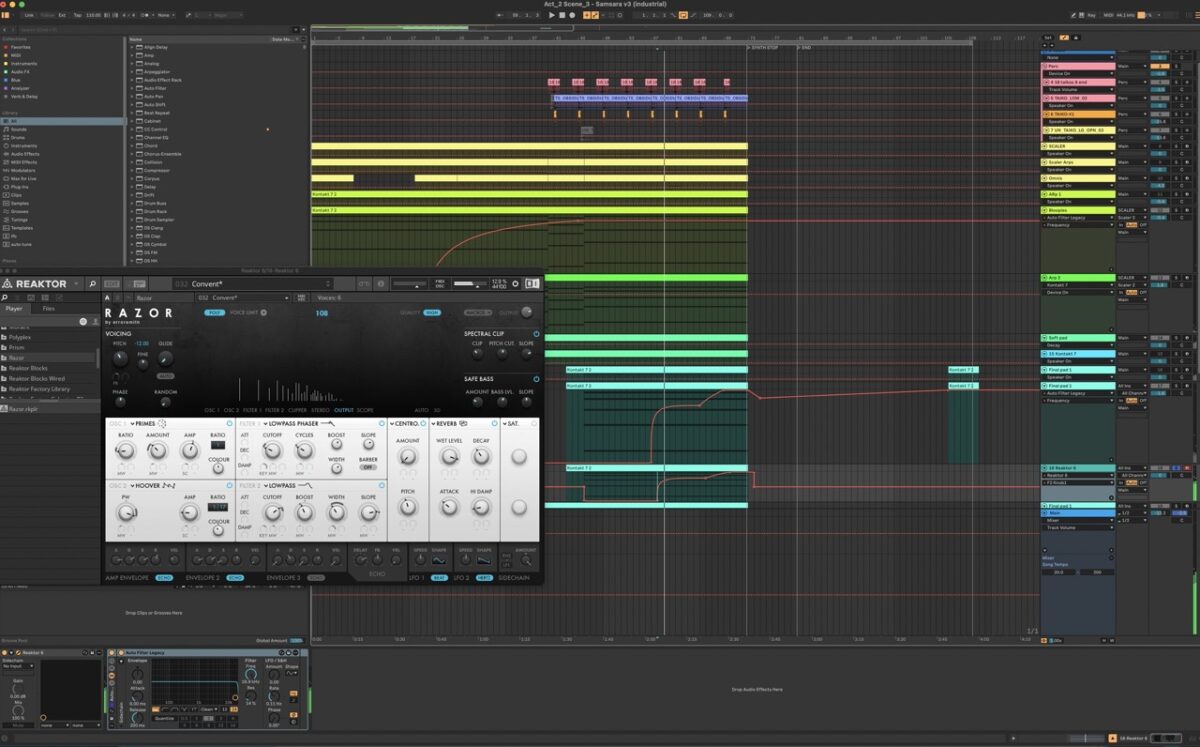
Outside of Ableton, Reaktor is the only instrument I’ve consistently used since the very beginning. I have patches in there that show up on every record I’ve made, including ones that helped define the sound of early Glitch Mob. In a time when music tools are getting more polished, more hi-fi, and more cookie-cutter, Reaktor still feels like a place to get lost.
It’s also a goldmine of free instruments from the community. If you’re willing to dig and experiment, there’s weird magic in there that doesn’t exist anywhere else. You don’t need to learn how to build from scratch. Just start playing. You’ll eventually find something that surprises you, and that surprise is where everything begins.
Pro Tip: Assbooster is a super hard-to-find old ensemble that we used on old Glitch Mob records. Legendary.
Wrapping it all up
Big thanks to Boreta for walking us through the ideas, ethics, and tools behind “Back to Life.” His use of Ai.mogen pushes past the usual AI debate and asks a more valuable question: what can we do with AI when artists are still in charge? That answer, at least in Boreta’s hands, is something messy, personal, and built to evolve.
With his new solo album Hear the Listener having landed on June 5, it’s clear that his creative language is as flexible as the tools he’s trusted since the beginning.
